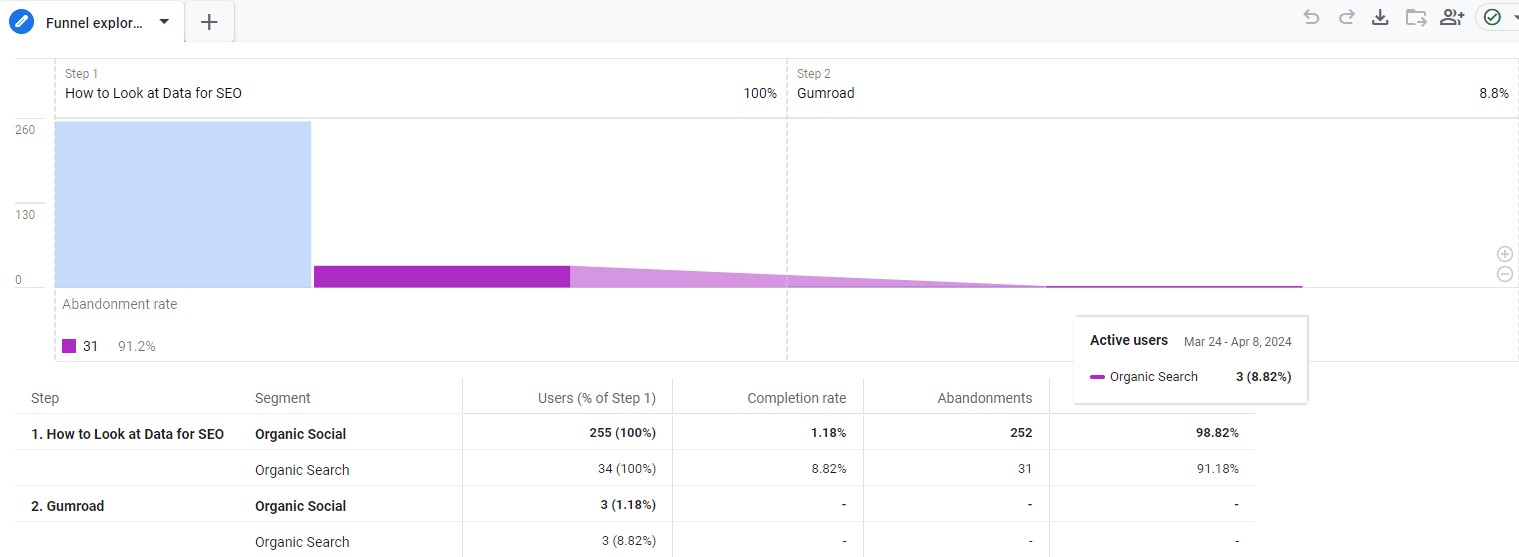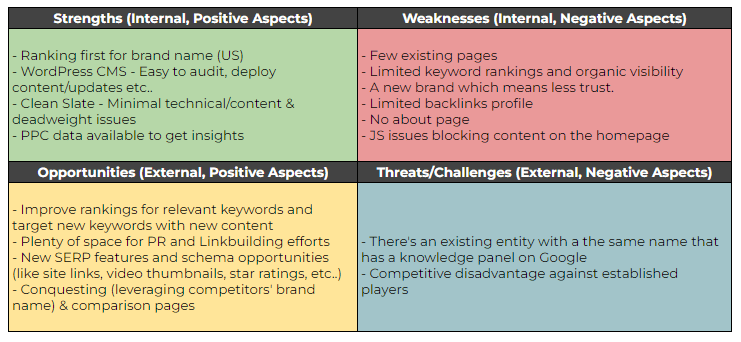The Problem With MOM SEO Reporting

We all have to deliver SEO performance reports to our clients. One of the most commonly used reports is the Month Over Month (MOM) report. But is this a good way to present SEO work and results?
What is Month Over Month reporting?
In very simple words, a Month Over Month growth shows the percentage change of a specific metric on a monthly basis. An Example would be:
| Month | Clicks |
|------------- |-------- |
| July 2022 | 1000 |
| August 2022 | 1200 |
| MOM% | 20% |To calculate MOM% change, use this formula:
[(New - Old)/Old]*100
Sometimes, MOM Doesn't Work for SEO
Over and over, many SEOs and Google representatives have highlighted that SEO changes can take time to reflect on a website. Here's what John Muller had to say:
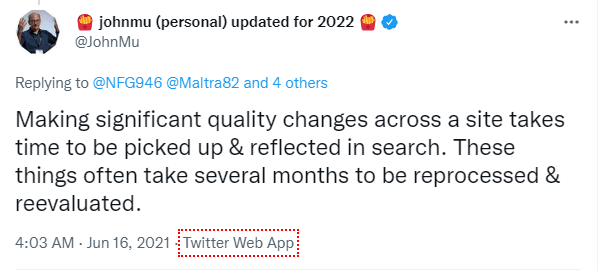
John Muller has also mentioned that content can take anything from hours to weeks to get indexed and "In practice, most good content is picked up and indexed within about a week" [Source].
Even with the latest Helpful Content Update, Google stated that:
"A natural question some will have is how long will it take for a site to do better, if it removes unhelpful content? Sites identified by this update may find the signal applied to them over a period of months."
With all of this in mind, when you are doing MOM analysis, you are rarely analyzing the impact of the SEO work done last month or so far, on this month's performance. For example, having a MOM 20% organic traffic growth in August, is rarely due to the SEO work you did in July. It can be, depending on what you did exactly but generally speaking this is not common.
Also so many times MOM% increases or decreases are caused by seasonality. The assumption that we as SEOs have much control over our MOM growth is not very accurate. We have more control over QOQ% or YOY% and those numbers would make more sense to talk about.
MOM reporting assumes that the path for SEO growth is linear and made up of small monthly positive increments.
MOM is used to show that we are in the right direction towards achieving our goals, but for SEO, we cannot simply measure how much we moving are towards our goals on a monthly basis.
Moving towards SEO Goals, rarely looks like this:
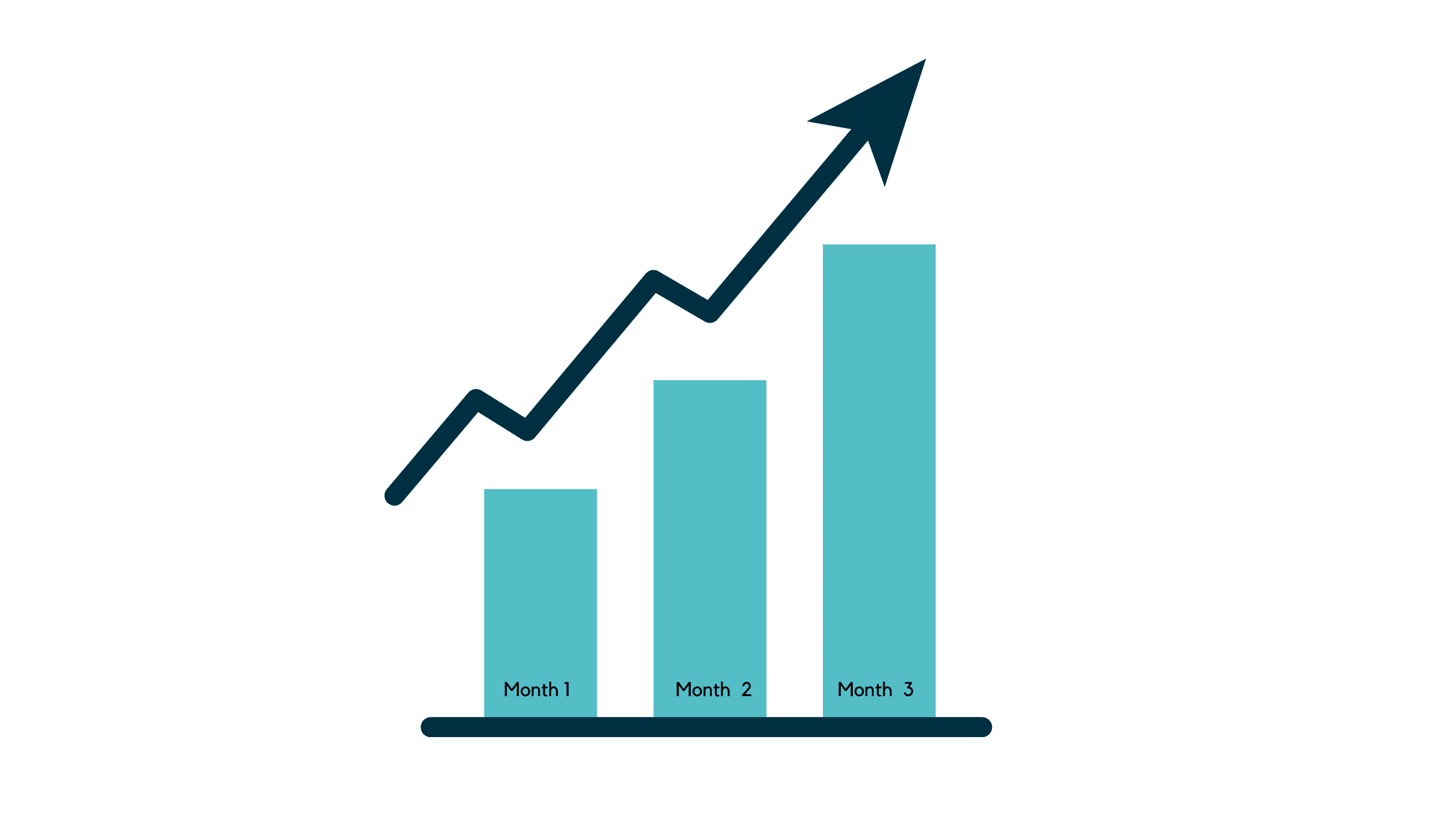
It actually looks more like this:
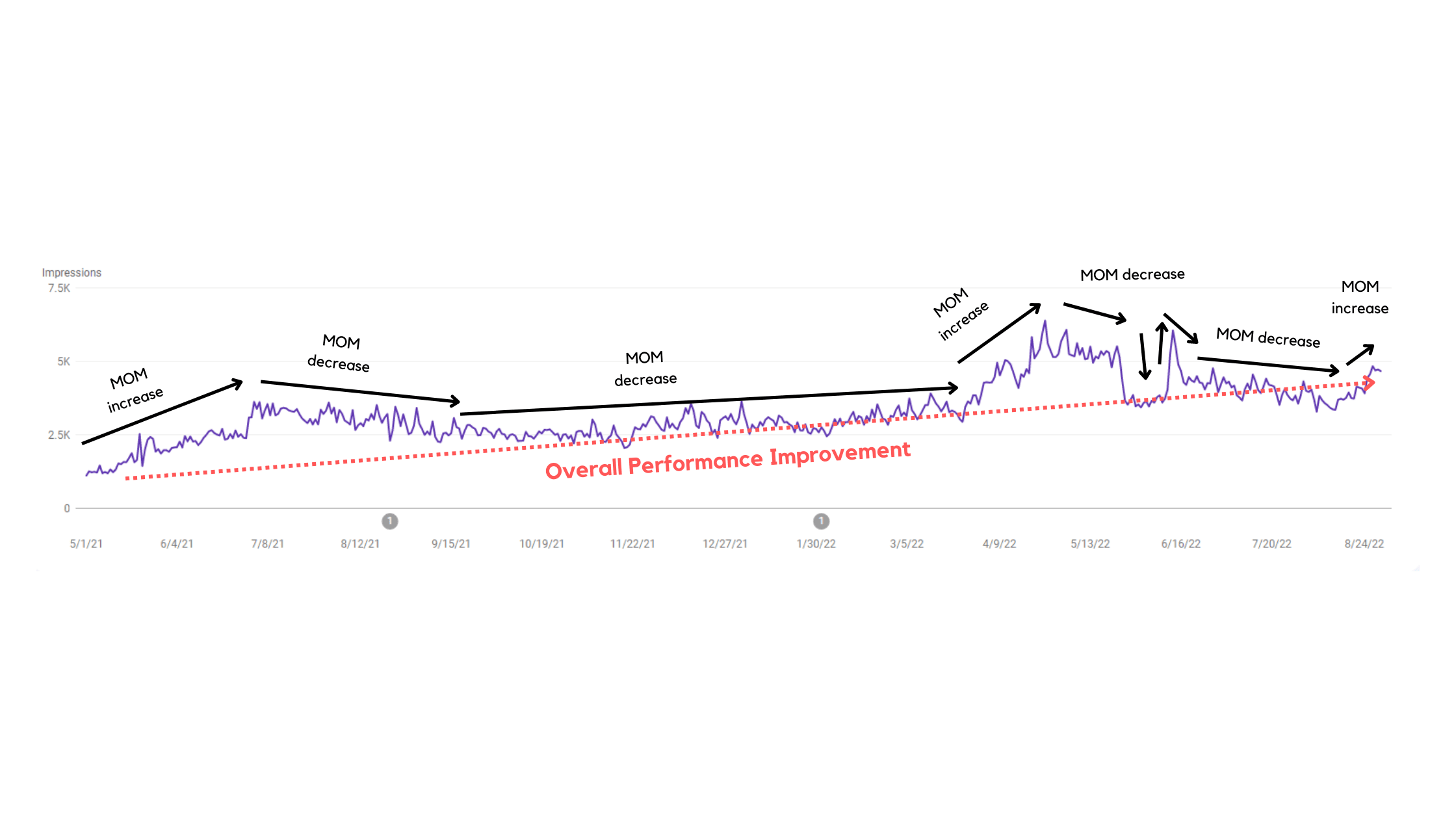
In SEO you can see a spike in MOM performance, then a drop in MOM performance and both are totally fine. A negative MOM in SEO does not necessarily mean you did something wrong nor does it mean you didn't execute. So what does MOM for SEO performance shows? That's exactly why I don't think it's an ideal way to measure SEO performance.
You can add links to the footer in Oct (usually a quick SEO win), start seeing improvement in Nov and your traffic grew by 10% MOM (assuming you have a small website). Comes Dec, low season for many businesses and you end up with -15% with MOM not because you didn't do any work in Nov or because you necessarily did something wrong, but just because seasonality for example. In that context, what does MOM value mean? Not much really... In fact it may give the wrong impression that your SEO strategy is not working.
So MOM growth reporting:
- Does not necessarily show the impact of work you've done as most SEO work takes time (exceptions exist).
- May falsely imply that SEO efforts are impacting performance positively or negatively.
- Are better suited to tracking the performance of newly released/updated SEO content, with an understanding that there'll be minor improvements every month and this metric does not reflect the impact of SEO efforts during times sensitive to seasonality & Google updates. So for example, if you release a new blog post, once it gets indexed, you can start monitoring its MOM performance till it reaches some level of stability.
- May be suitable in tracking the performance of quick wins and micro SEO changes.
- Is many situations, it's not ideal to use MOM to measure overall website organic performance and site-wide changes that can take longer time to start showing impact.
- It is not an ideal way to say whether an SEO strategy is working or not.
Is MOM a useful SEO Metric?
In summary, it depends :) but always be aware of it's limitations.
So? How to Resolve This?
The solution is actually pretty simple!
We need a metric that takes into account the bigger picture. That's why, I always suggest attaching Annual change reports for the same month along the MOM numbers.
So for example if you're reporting on Jun 2022 Vs May 2022, make sure to also report on June 2202 Vs June 2021. I've found many times that while the MOM is low or negative, the overall annual change for the same month is positive and healthy.
Formula: [(Current Month - Same Month Last Year)/Same Month Last Year]*100
Next Steps
For me, I'm experimenting and testing other metrics to try to find a better metric that can reflect SEO work on a monthly basis.
The SEO Riddler Newsletter
Join the newsletter to receive the latest updates in your inbox.


